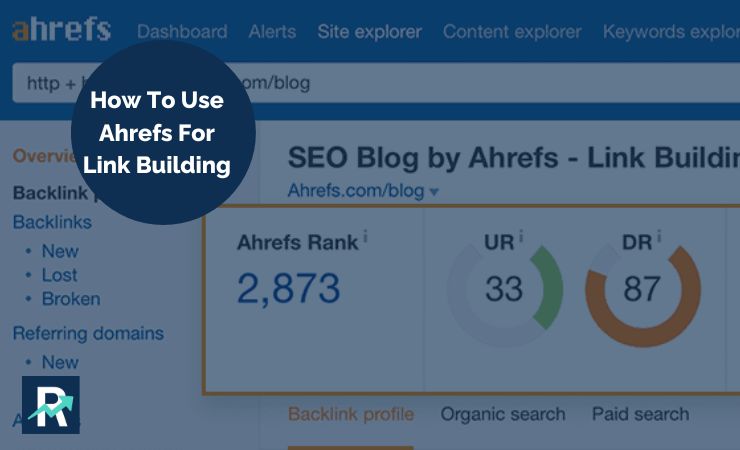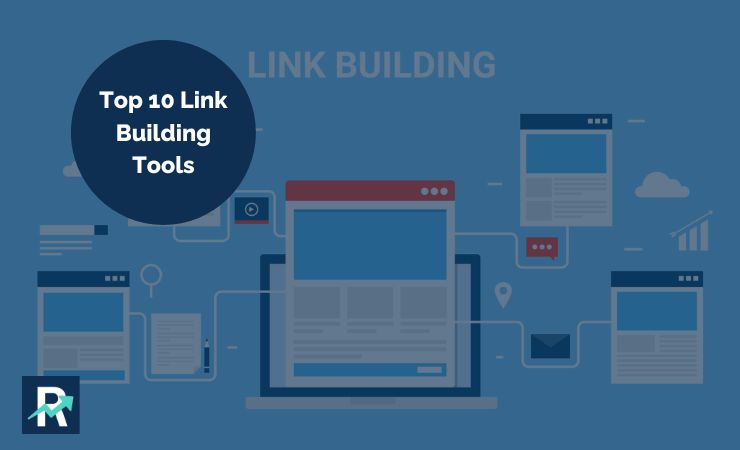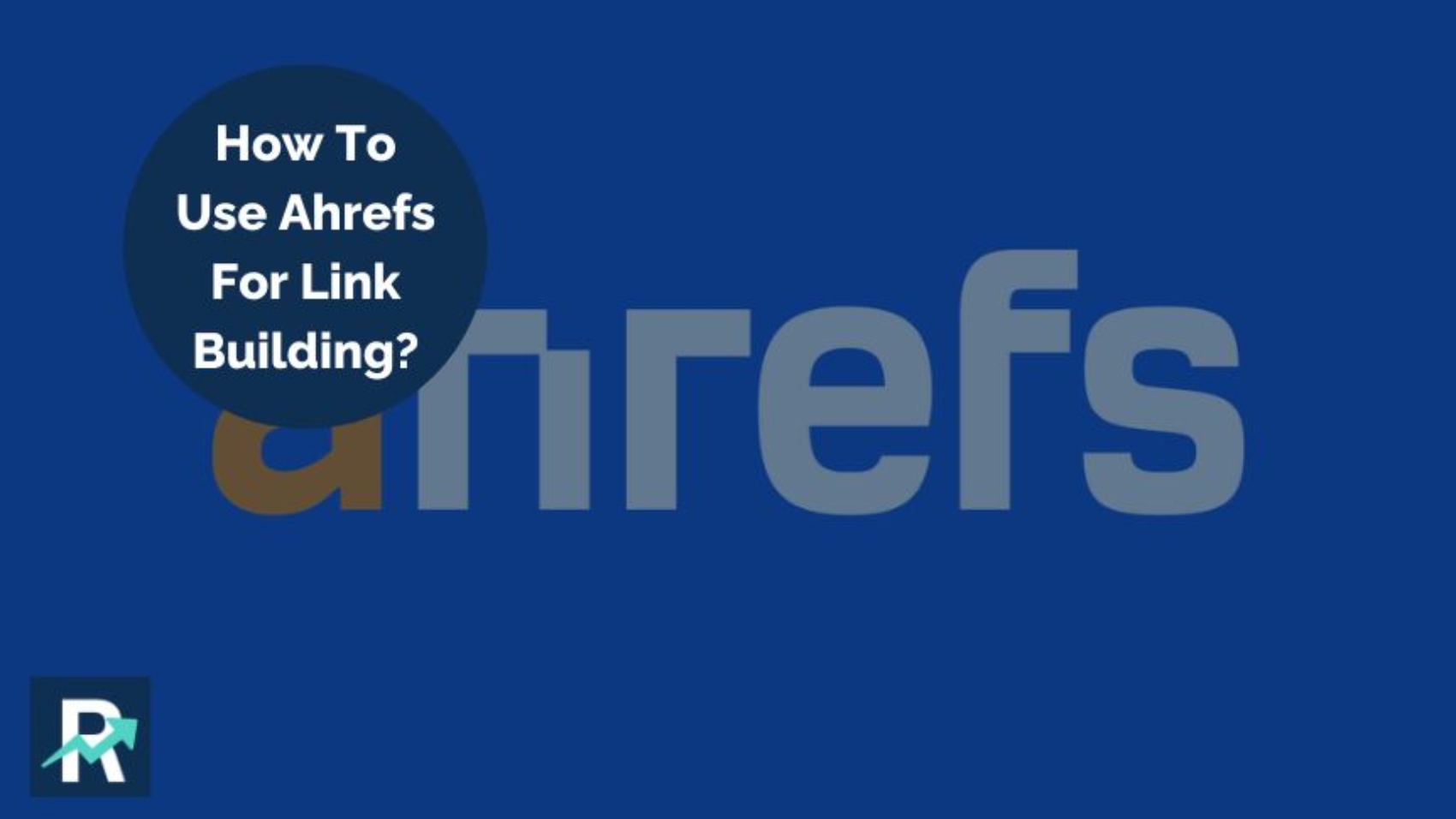Welcome to the world of link building, where boosting your website’s authority is just a few strategic clicks away. Today, we’ll dive into the realm of Ahrefs, a powerful tool that can elevate your website’s SEO game effortlessly. Link building is like connecting the dots on the vast canvas of the internet. Ahrefs acts as your virtual compass, guiding you through the digital domain to discover new opportunities and enhance your website’s presence.
Within Ahrefs, the Site Explorer is your starting point, acting as a portal to the online realm. With a simple URL input, you gain access to a treasure trove of information, from backlinks reports to content explorers. It’s here you’ll unravel the intricate web of connections and identify the broken links that present golden opportunities for improvement.
But Ahrefs doesn’t stop there; it offers robust filtering options to refine your search. Navigate effortlessly through domains, using metrics like domain rating and other SEO metrics to pinpoint potential link-building targets. The technical SEO features also come into play, allowing you to optimize your site for search engines and ensure your content resonates in the online echo chamber.
When it comes to outreach, Ahrefs becomes your ally. Armed with a plethora of link-building strategies and tactics, you can seamlessly ask websites to link to your content. Go to the backlinks report, identify promising sites, and reach out with confidence.
The Basics Of Link Building In 2024
Link building in 2024 is still a crucial aspect of improving your website’s visibility and search engine rankings. Understanding the basics can be the key to enhancing your online presence. One fundamental element is backlinks, which are links from other websites to yours.
These can be valuable in boosting your site’s authority and credibility. However, not all backlinks are equal. Consider the domain rating, which indicates the strength of a website’s backlink profile. Focus on obtaining backlinks from sites with higher domain ratings to maximize their impact on your SEO.
Keyword research is another essential step. Before reaching out to other websites, identify relevant keywords for your content. These will help you target specific audiences and improve the effectiveness of your link-building efforts. Once you have a list of keywords, use search operators on Google to find sites and pages related to your niche. This “plain English” approach makes the process easier and more effective.
One effective strategy is to ask website owners to link to your content. Personalized outreach can go a long way. Be genuine, explain why your content is valuable, and how it can benefit their audience. Building relationships is key, and this human touch can make your request more compelling.
There are various ways to find opportunities for building links. Utilize SEO toolbars or checkers to analyze the backlink profile of potential linking sites. Look for referring domains and find relevant web pages that align with your content. A useful tool is the “best by links” report, which identifies web pages with the most backlinks. Analyzing these pages can provide insights into effective link-building strategies.
Consider guest posting as a means of acquiring backlinks. By contributing high-quality content to other websites in your niche, you not only build links but also establish yourself as an authority in your field. It’s essential to find pages that accept guest posts and contact the head of content for submission guidelines.
Avoid shortcuts like buying links, as this can harm your website’s reputation. Instead, focus on building links organically by creating valuable and shareable content. Keep an eye on dead pages within your niche, and offer to replace broken links with your relevant content. This not only helps the website owner but also provides you with a quality backlink.
How To Build Links With Best SEO Strategies

Building links with effective SEO strategies is crucial for improving your website’s visibility and attracting more visitors. Here are some practical tips to help site owners enhance their link-building efforts:
Understanding Google Search
To begin with, familiarize yourself with how Google search works. Learn to use advanced search operators to filter for pages that are relevant to your niche. This will help you identify potential link opportunities and streamline your link-building process.
Link Prospecting and Outreach
Engage in link prospecting by actively searching for websites in your industry that could link to your page. Develop a personalized outreach strategy to connect with these site owners. Building relationships in your web explorer community can be the easiest way to get lots of traffic through link opportunities.
Crafting Link Bait
Create compelling content that serves as link bait. This could be informative articles, infographics, or interactive tools that others in your digital marketing community would find valuable. Link bait not only attracts attention but also encourages other site owners to link to your content, improving your link profile.
Internal Linking Strategy
Don’t overlook the importance of internal links within your own website. Strategically place links within your content to guide users to other relevant pages on your site. This not only enhances the user experience but also helps search engines understand the structure of your website.
Quality Over Quantity
When it comes to building links, focus on quality over quantity. Seek high-quality backlinks from reputable websites in your field. Google values these links more than numerous links from low-authority sites. Building a strong network of trustworthy links will significantly improve your website’s SEO performance.
Encourage Others to Link to You
Include a “link to us” section on your website where you provide easy-to-use code snippets for others to link to your page. Make it simple for other site owners to share your content, increasing your chances of acquiring valuable external links.
Consistent Monitoring and Adaptation
SEO tactics that work today may not be as effective tomorrow. Stay informed about the latest trends and algorithms, and be prepared to adapt your link-building strategy accordingly. Regularly monitor your website’s performance and make adjustments to ensure sustained success in attracting lots of traffic through link opportunities.
By implementing these strategies, site owners can develop a robust link-building approach that not only aligns with Google’s search algorithms but also enhances their overall digital marketing presence.
How To Use Ahrefs For Link Building

Utilizing Ahrefs’ Site Explorer
Ahrefs’ Site Explorer is an indispensable tool for SEO professionals and website owners seeking to gain deeper insights into their website’s backlink profile. By entering the URL into Site Explorer, users can comprehensively analyze which websites are linking to them. This information is crucial for understanding the current state of a site’s link structure and identifying potential areas for improvement, especially in terms of internal link opportunities.
Identifying Internal Link Opportunities
One standout feature of Ahrefs is its ability to unveil internal link opportunities. Website owners can scrutinize their own site’s structure through Site Explorer and pinpoint pages that don’t currently link to each other but should. This is a strategic approach to improving user experience and ensuring that link equity is distributed effectively across the entire website.
Exploring External Link Prospects
Ahrefs’ Site Explorer is equally powerful for those on the lookout for external links. SEO professionals can leverage the tool to analyze competitors’ backlink profiles, uncovering websites that might be willing to link to similar content. Armed with this information, website owners can approach these prospects with a targeted outreach strategy.
Leveraging Ahrefs’ SEO Toolbar
To streamline the link-building process further, Ahrefs offers an SEO Toolbar. This browser extension integrates seamlessly with web browsers, providing quick access to essential SEO metrics for any webpage. SEO professionals can utilize this tool to evaluate the link-building potential of various pages without the need to navigate away from the content.
Exporting Results for Outreach
Once link prospects are identified, Ahrefs enables users to export the results for more in-depth analysis or streamlined outreach. This feature simplifies the communication process, making it easier for website owners and SEO professionals to connect with potential link partners and foster mutually beneficial relationships.
Creating Link Bait with Ahrefs
Ahrefs empowers users to create link bait effectively by understanding the prevailing topics and content within their niche. By leveraging the insights from Ahrefs’ tools, website owners can develop compelling content that other websites might find valuable and, in turn, link to, thus improving their overall link profile.
The Best Way to Find Relevant Pages
In the realm of link-building tactics, Ahrefs stands out as the best way to find relevant pages. Whether searching for specific topics or analyzing competitors’ content, Ahrefs’ capabilities provide SEO professionals and website owners with the insights needed to implement diverse link-building strategies successfully.
Top 10 Link Building Tools

Here is a table featuring the top 10 link building tools along with different information about each:
| Tool | Main Features | Pricing Model | Suitable For | Integrations |
|---|---|---|---|---|
| Ahrefs | Backlink analysis, competitor research, keyword tracking | Subscription-based | SEO professionals, website owners | Google Analytics, Google Search Console |
| Moz | Link analysis, site audits, keyword research | Subscription-based | SEO professionals, marketers | Google Analytics, Google Search Console |
| Semrush | Backlink analysis, keyword research, site audits | Subscription-based | Digital marketers, SEO professionals | Google Analytics, Google Search Console |
| BuzzStream | Outreach management, link prospecting, influencer outreach | Subscription-based | Marketing teams, agencies | Gmail, Outlook, Salesforce |
| Linkody | Backlink monitoring, competitor analysis, link metrics | Subscription-based | SEO professionals, small businesses | Google Analytics, Moz |
| SEMrush | Backlink analysis, keyword research, site audits | Subscription-based | Digital marketers, SEO professionals | Google Analytics, Google Search Console |
| Majestic | Backlink analysis, competitor research, link tracking | Subscription-based | SEO professionals, website owners | Google Analytics, Moz |
| Pitchbox | Outreach automation, influencer outreach, link prospecting | Subscription-based | SEO professionals, marketing teams | Gmail, Outlook, Salesforce |
| Raven Tools | Link building, site audits, reporting | Subscription-based | SEO professionals, agencies | Google Analytics, Google Search Console |
| Hunter | Email verification, finding email addresses for outreach | Freemium/Pay-as-you-go model | Marketers, outreach professionals | Salesforce, Zapier, HubSpot |
Please note that pricing models and features may change over time, so it’s recommended to check the respective tool’s website for the most up-to-date information.
Final Thoughts
In the dynamic landscape of SEO, mastering link building is key. Ahrefs proves invaluable, not just as an SEO tool but as a friend in the SEO journey. By using Ahrefs, we can easily find many backlinks, leveraging its free website authority checker and exploring the Ahrefs blog for insights.
The tool’s content explorer helps discover linking opportunities, ensuring we avoid linking to dead pages. To enhance our strategies in 2024, hit search, check, and pitch. Ahrefs SEO empowers us to navigate the vast digital ocean, providing the necessary tools to build meaningful links and propel our blogs forward.
Frequently Asked Questions (How To Use Ahrefs For Link Building?)
How to Find Backlinks Using Ahrefs:
To find backlinks using Ahrefs, follow these steps:
- Access Ahrefs Site Explorer: Open Ahrefs and go to the Site Explorer tool.
- Enter Your Domain: Input your domain into the search bar and hit search to gather data on your website’s backlinks.
- Review Backlink Overview: Navigate to the “Backlink” section to get an overview of your existing backlinks.
- Using Content Explorer: Utilize Ahrefs’ Content Explorer tool to find pages related to your niche that are gaining backlinks. Enter relevant keywords and filter results based on referring domains, traffic, or other metrics.
- Check Competitor Backlinks: Analyze backlinks of your competitors by entering their domains into Ahrefs. Identify quality backlinks and understand the linking strategies used.
- Linking to Dead Pages: Identify dead pages by checking the status of the linked pages. Use Ahrefs to verify if the pages your site is linking to are still active. If linking to dead pages, consider updating or replacing those links.
- Pitch Dead Page Replacement: When linking to dead pages, pitch replacement content to the website owners. Propose your content as a valuable substitute and explain the benefits of updating the link.
- Tools that Will Help: Ahrefs offers various tools that will help in this process, such as Site Explorer, Content Explorer, and more. Leverage these tools for comprehensive backlink analysis.
How to Create a Link Building Plan:
To create a link building plan, follow these steps:
- Set Objectives: Define clear goals for your link building efforts. These could include increasing domain authority, improving search engine rankings, or driving targeted traffic.
- Keyword Research: Using tools like Ahrefs, perform keyword research to identify relevant terms for your industry. These keywords will guide your content creation and link building strategy.
- Lot of Digital Links to Our Blog: Develop a content strategy that focuses on creating valuable and shareable content for your blog. Promote this content across various digital platforms to attract links naturally.
- Resource Page Link Building: Identify resource pages related to your niche using Ahrefs’ Content Explorer. Reach out to these websites, showcasing your valuable content and suggesting it as a useful addition to their resource page.
- Hit Search and Check: Regularly use Ahrefs to hit search and check the performance of your link building efforts. Monitor new backlinks, analyze their quality, and assess the impact on your website’s SEO.
- Pitch Content to Relevant Sites: Utilize Ahrefs to find websites that could benefit from your content. Outreach to these websites with personalized pitches, explaining why your content is valuable for their audience.
- Measure and Analyze: Use Ahrefs’ tools to measure the success of your link building plan. Track changes in your website’s backlink profile, organic traffic, and search engine rankings.
How to Do Resource Page Link Building:
Resource page link building involves getting your content featured on resource pages within your industry. Follow these steps:
- Using Content Explorer: Leverage Ahrefs’ Content Explorer to find resource pages in your niche. Search for terms like “resources,” “links,” or “recommended websites” and filter results based on relevance.
- Identify Relevant Resource Pages: Review the search results and identify resource pages that are relevant to your content and target audience.
- Pitch Your Content: Craft personalized outreach emails using Ahrefs to contact the owners of the identified resource pages. Highlight the value of your content and explain why it would be a valuable addition to their resource list.
- Linking to the Dead Page and Pitch: If you find resource pages linking to dead pages, pitch your content as a replacement. Emphasize how your content adds value and provides an up-to-date resource for their audience.
- Tools That Will Help: Ahrefs provides tools like Content Explorer and Site Explorer that are invaluable for identifying relevant resource pages and assessing their backlink profiles.
- Measure Success: Utilize Ahrefs to track the success of your resource page link building efforts. Monitor new backlinks, changes in organic traffic, and improvements in search engine rankings. Adjust your strategy based on the results.


